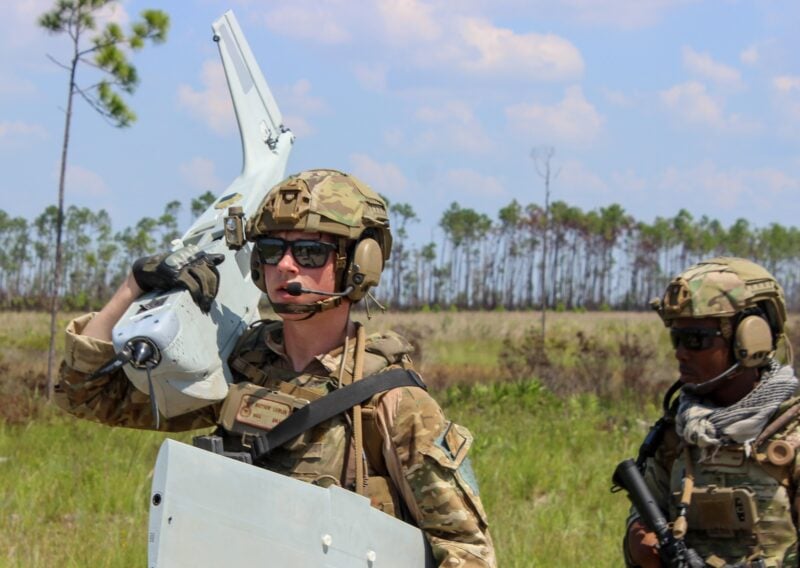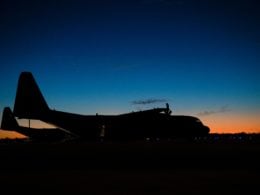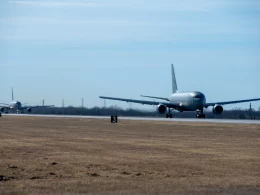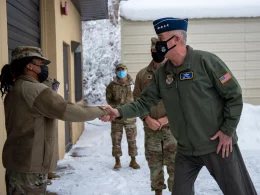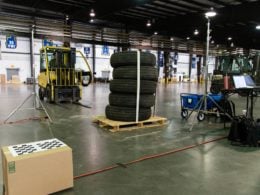JOINT BASE SAN ANTONIO-LACKLAND, Texas – The Air Force is preparing for its first Air Task Force training events at Combat Support Training Range sites in November.
The events will give Airmen from ATF Combat Air Base Squadrons, or CABS, an opportunity to train as a team and demonstrate the CSTR sites’ ability to host combat support training, said Col. Ross Dotzlaf, Air Force Installation and Mission Support Center Readiness Integration chief.
“This will be a critical test for these sites and the units,” he said. “It’s the first time they will come together to train as a complete organization and that will help us validate the effectiveness of these training ranges.”
ATFs, their CABS and the CSTR initiative share a goal of building Mission Ready Airmen who are fully prepared and trained to deploy and win future wars, he said.
During three-week training events at Fort Bliss, Texas, and Tyndall Air Force Base, Florida, Airmen from the 11th and 12th ATFs will practice the skills needed to deploy as mission-ready units postured for combat operations against peer-level adversaries in contested environments.
AFIMSC hosted several planning workshops and site visits to prepare for the events over the past nine months.
“We’re focused on ensuring the success of the ATFs and giving them what they need to effectively use the CSTR sites for training,” Dotzlaf said.
The planning team included Air Force functional and ATF representatives, as well as subject matter experts from across AFIMSC. Airmen from the 801st RED HORSE Training Squadron and the 325th Fighter Wing at Tyndall, along with members of the Air Force Security Forces Center Desert Defender Ground Combat Readiness Training Center at Fort Bliss helped ready the sites.
“It is a huge effort,” Dotzlaf said. “Many, many people were involved in making this happen.”
Preparations included securing equipment for various scenarios and establishing support agreements with host installations and training units. The planning team also arranged contracts for essential services such as transportation, custodial work and vehicle maintenance, and developed event training plans, reporting instructions and equipment lists.
In the final planning workshops, CABS leaders visited the training sites, finalized training plans, and addressed logistics, reporting instructions and equipment needs.
“AFIMSC (and the functional SMEs) offered valuable insight on how to tackle the many hurdles our team came across when planning for the training events,” said Tech. Sgt. Dallas Rodgers, a training section chief with the 11th ATF at Davis-Monthan AFB, Arizona. “If it wasn’t for them, we would still be ‘spinning our tires’ on how to overcome a handful of obstacles.”
A CABS, consisting of about 300 Airmen from 54 different Air Force specialty codes, serves as an ATF’s primary base operation support element and provides sustainment, protection and airfield management. The training events will cover tasks related to these mission sets, as outlined in the ATF training plan.
“We plan on using this training opportunity as a baseline for our Airmen to assess where our strengths and weaknesses are,” Rodgers said. “It will also be the first opportunity for our team to get to know each other and build relationships as we advance our training skills.”
Due to the unique capabilities of each CSTR site, the unit training at Fort Bliss in November will train at Tyndall early next year, and vice versa.
“Teams built training plans tailored to specific tasks they can get after most,” Dotzlaf said. “At Fort Bliss, for example, there are more opportunities for force protection-type training. At Tyndall, there’s a lot more opportunities to train on skills needed for base beddown, sustainment or base recovery after attack. But there will also be some tasks that have overlap at both locations.”
AFIMSC began developing CSTR sites in 2022 and is aggressively working to establish up to six fully capable sites over the next several years. The sites are vital to improving readiness for ATF Airmen, Rodgers said.
“They provide our team with various terrain environments and capabilities, allowing us to practice and certify in multiple skills before deployment,” he said. “Unlike home station units that often lack these capabilities in a single location, CSTRs offer a centralized solution for comprehensive training. Instead of coordinating multiple TDYs to complete required tasks, our team can efficiently train and certify in one location.”
AFIMSC will continue growing CSTR site capacity and capability to meet the needs of the Air Force as the ATFs evolve into Deployable Combat Wings that team, train full-time and deploy together through the Air Force Force Generation model.
“We’re refining these sites as we learn what we need to do to better support the mission,” Dotzlaf said. “In November, we’ll get a lot of lessons learned on what they can do, what they need to do and how we can shape future training for these units.”




